LUNG OF THE MINE

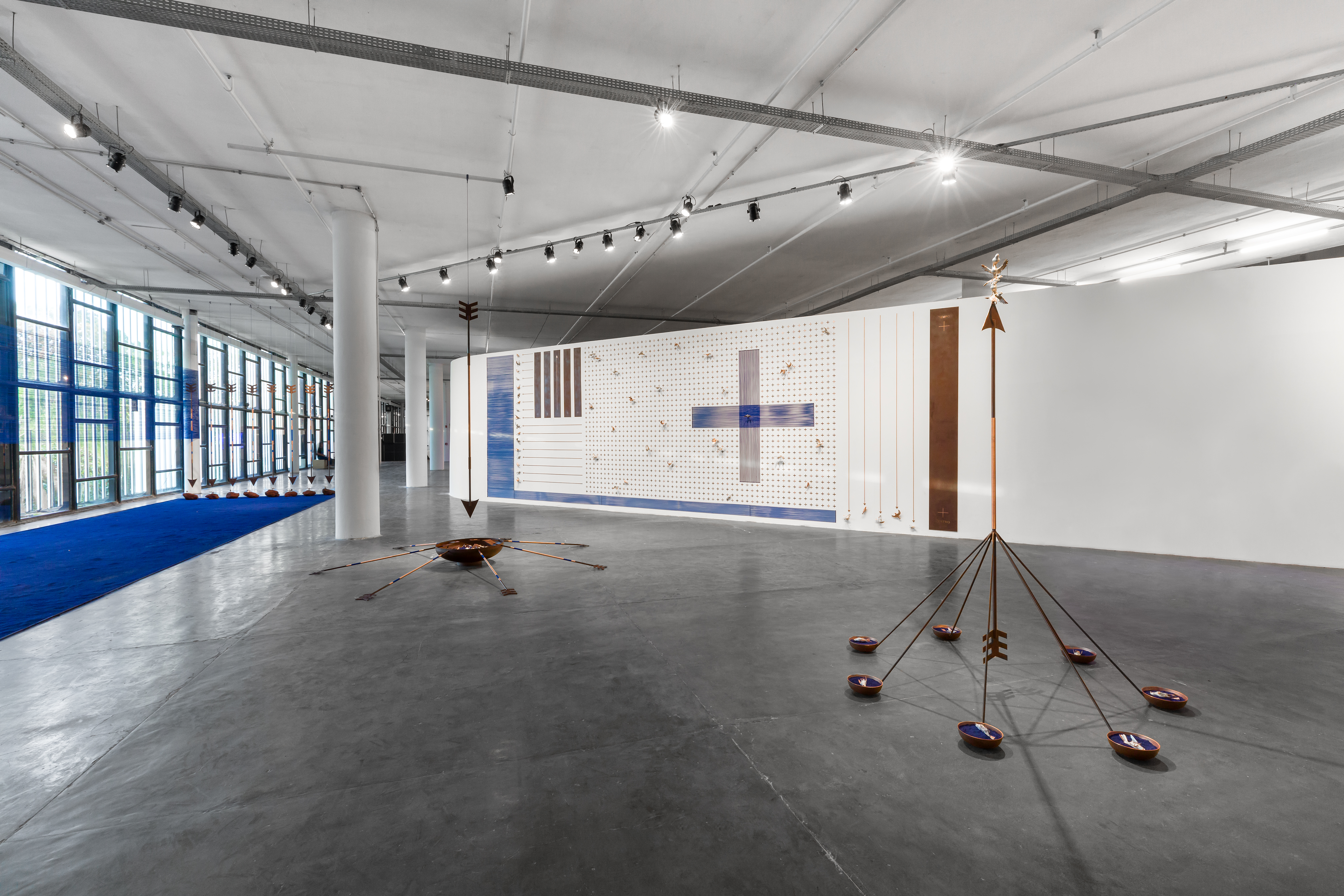
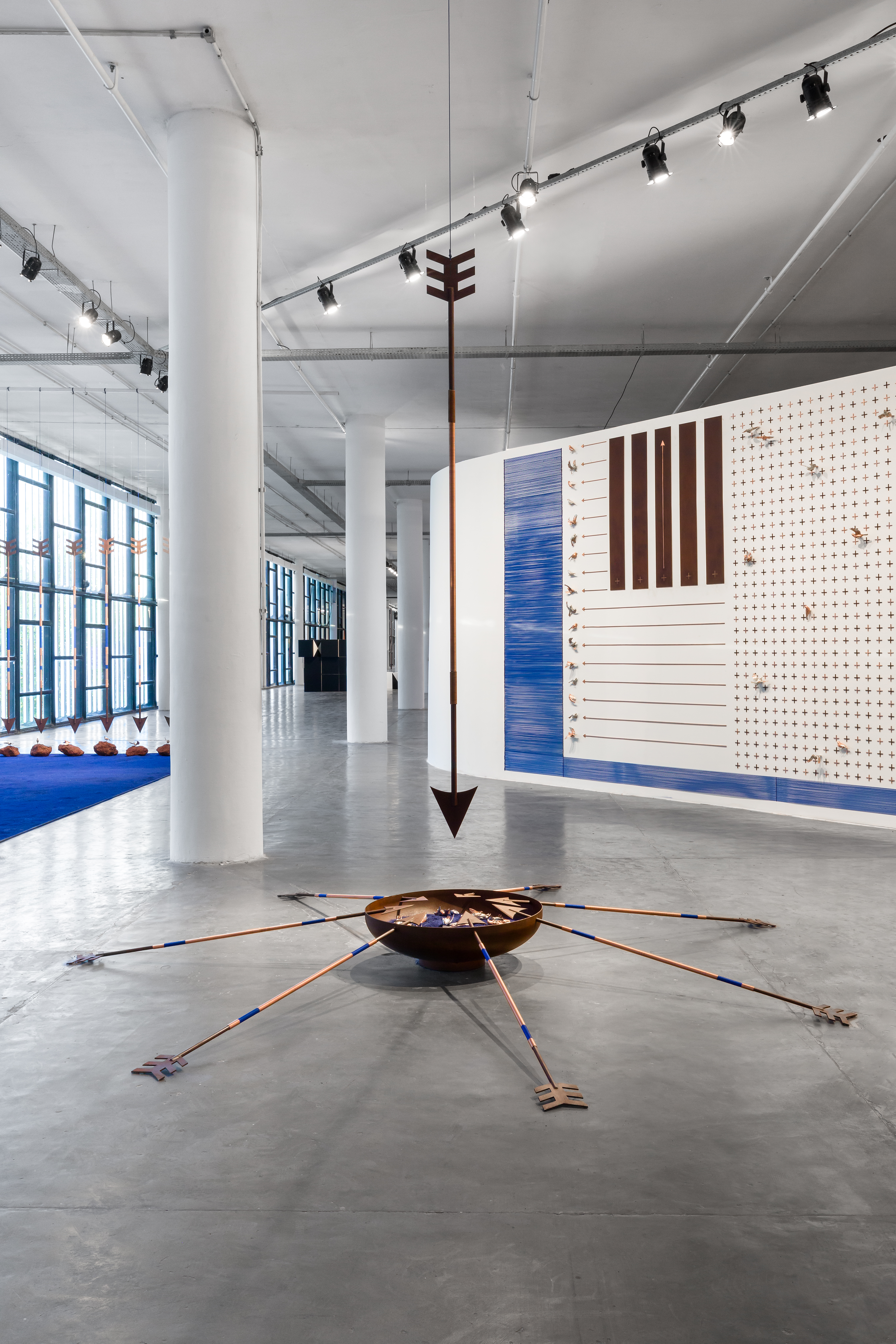
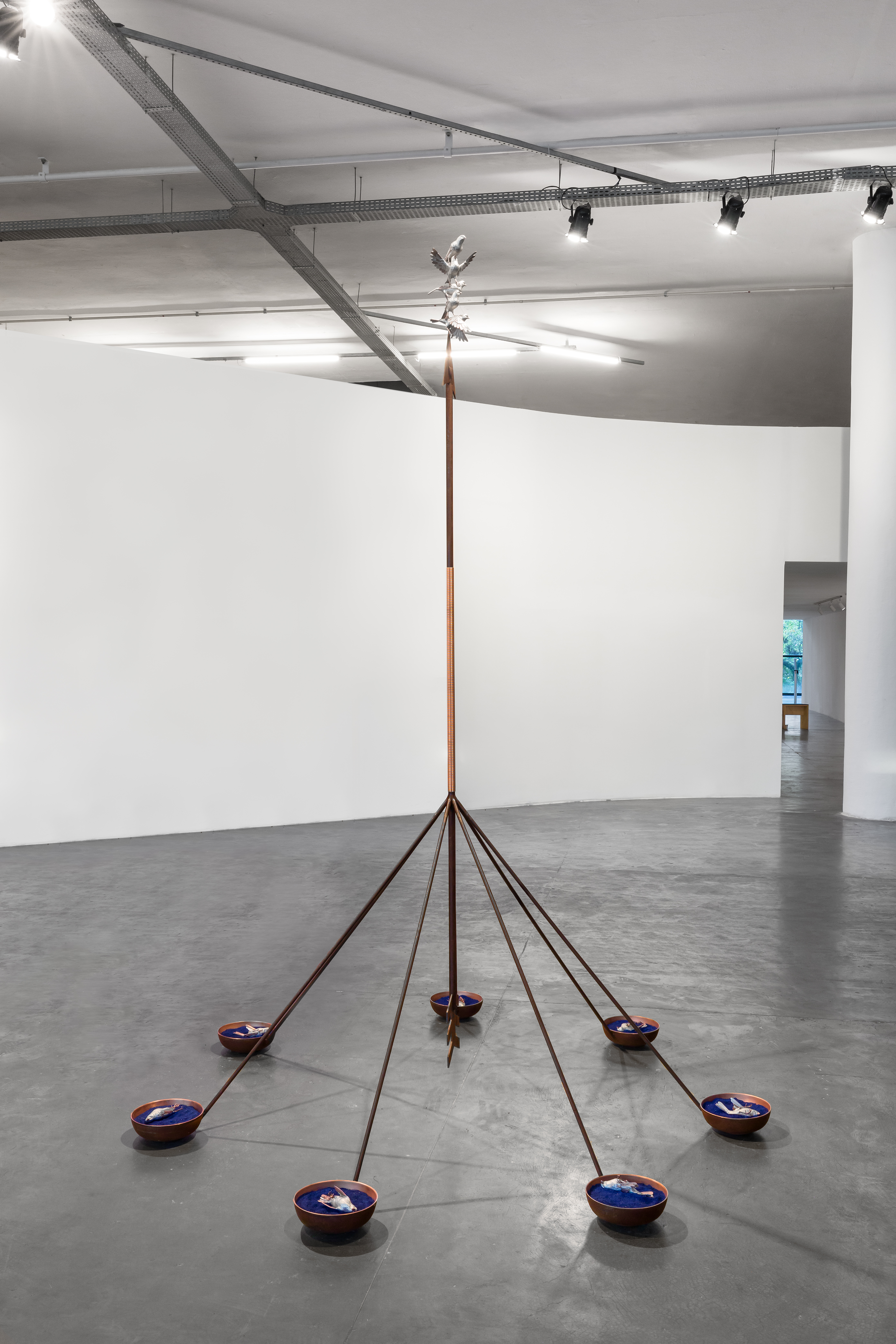





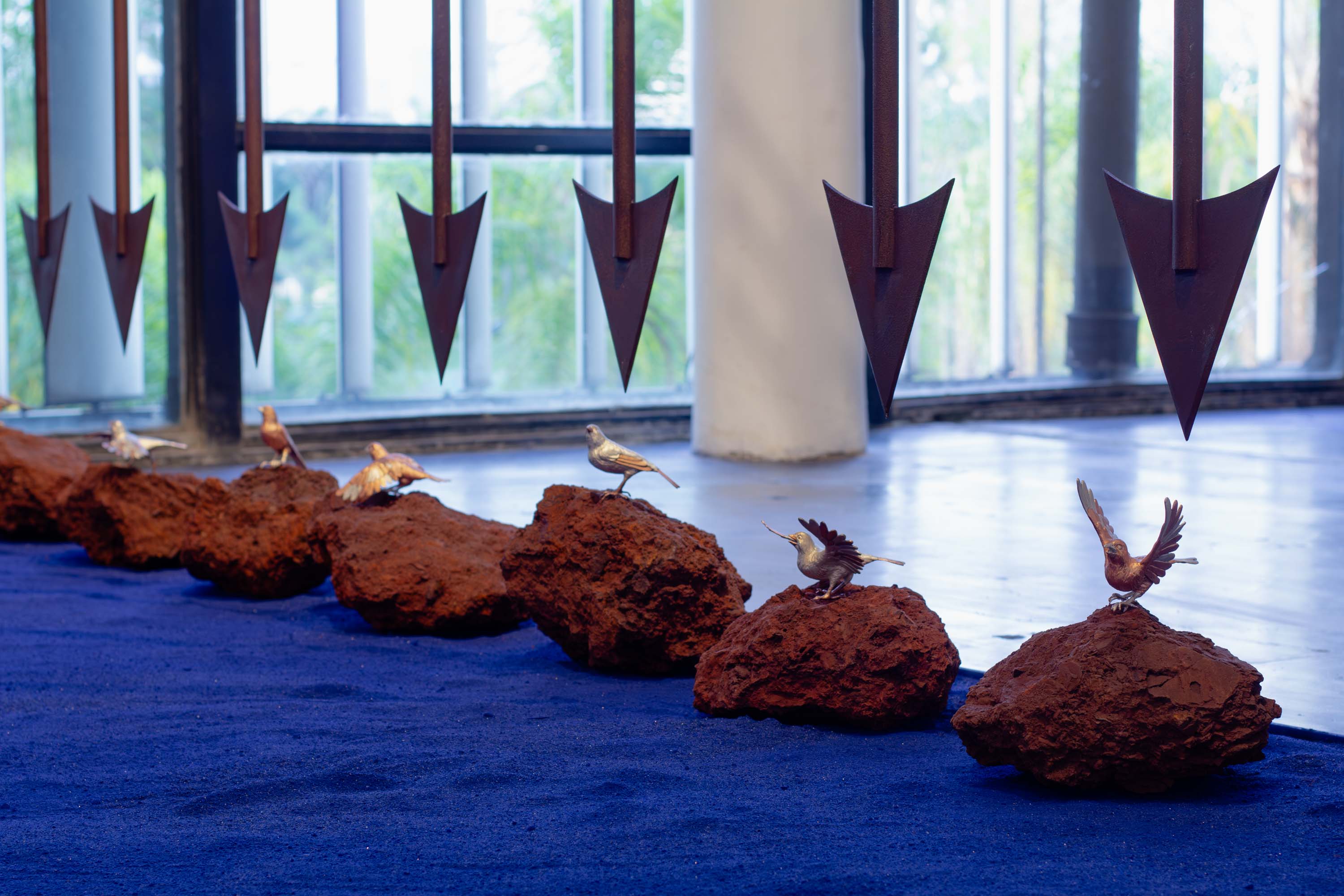
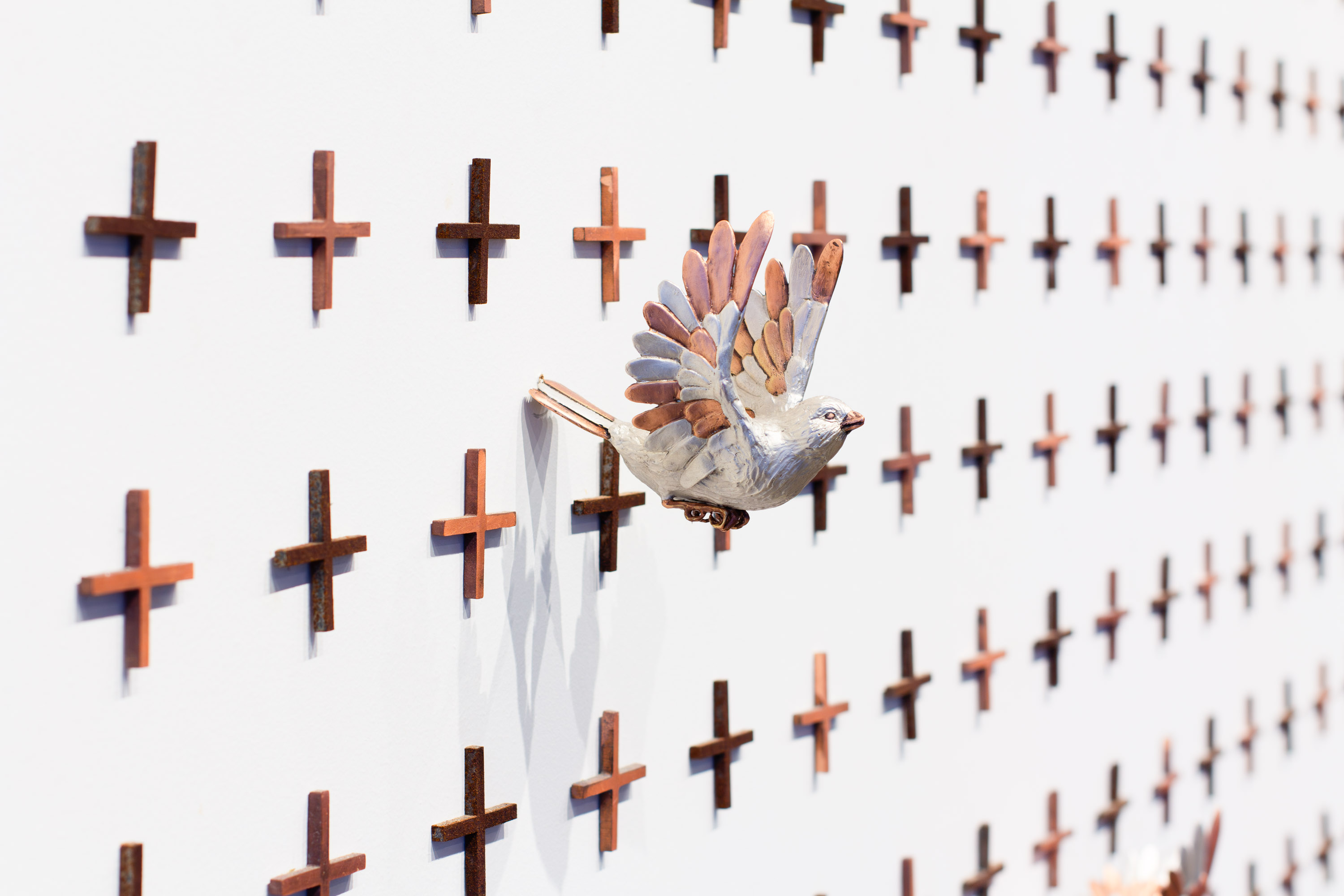




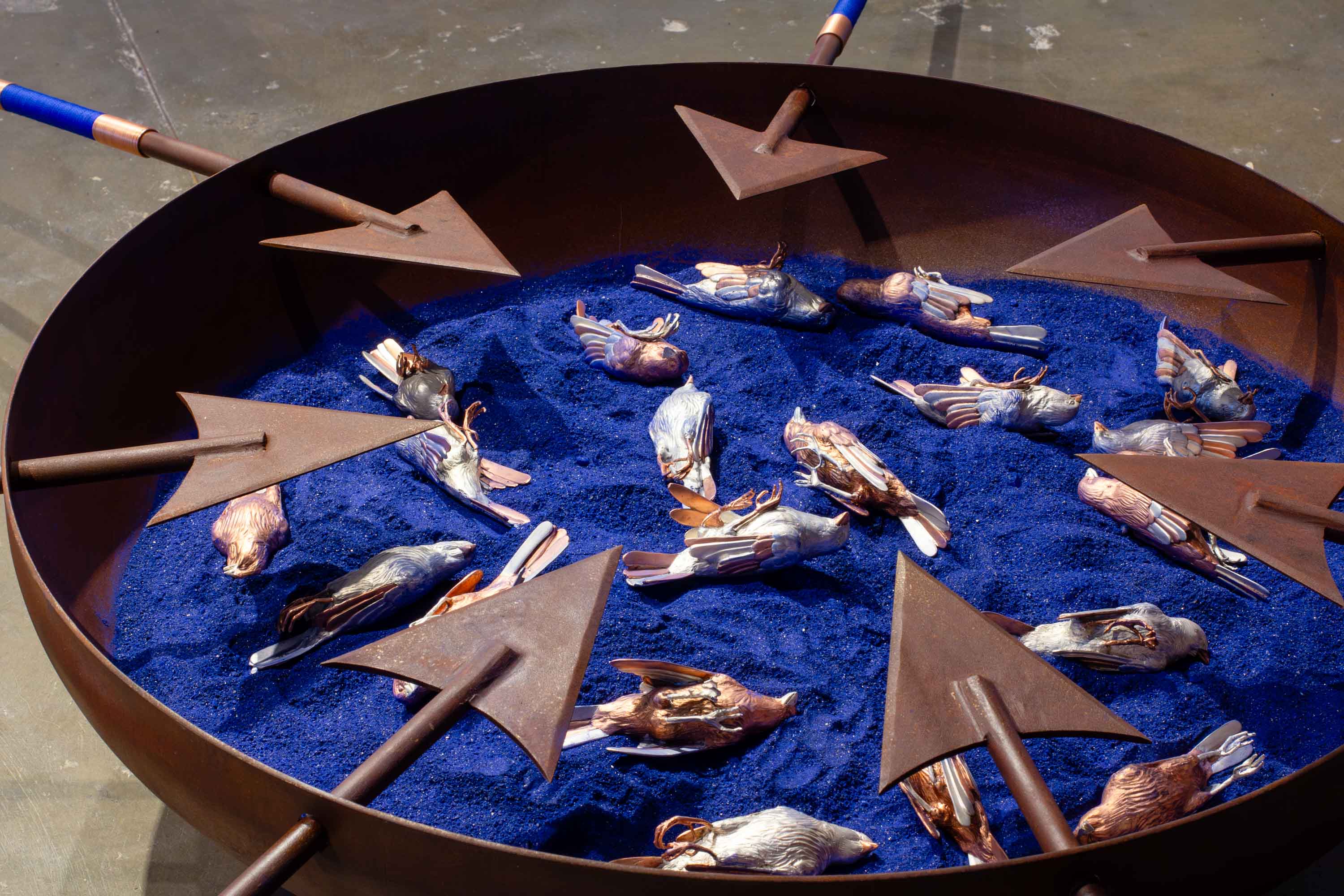
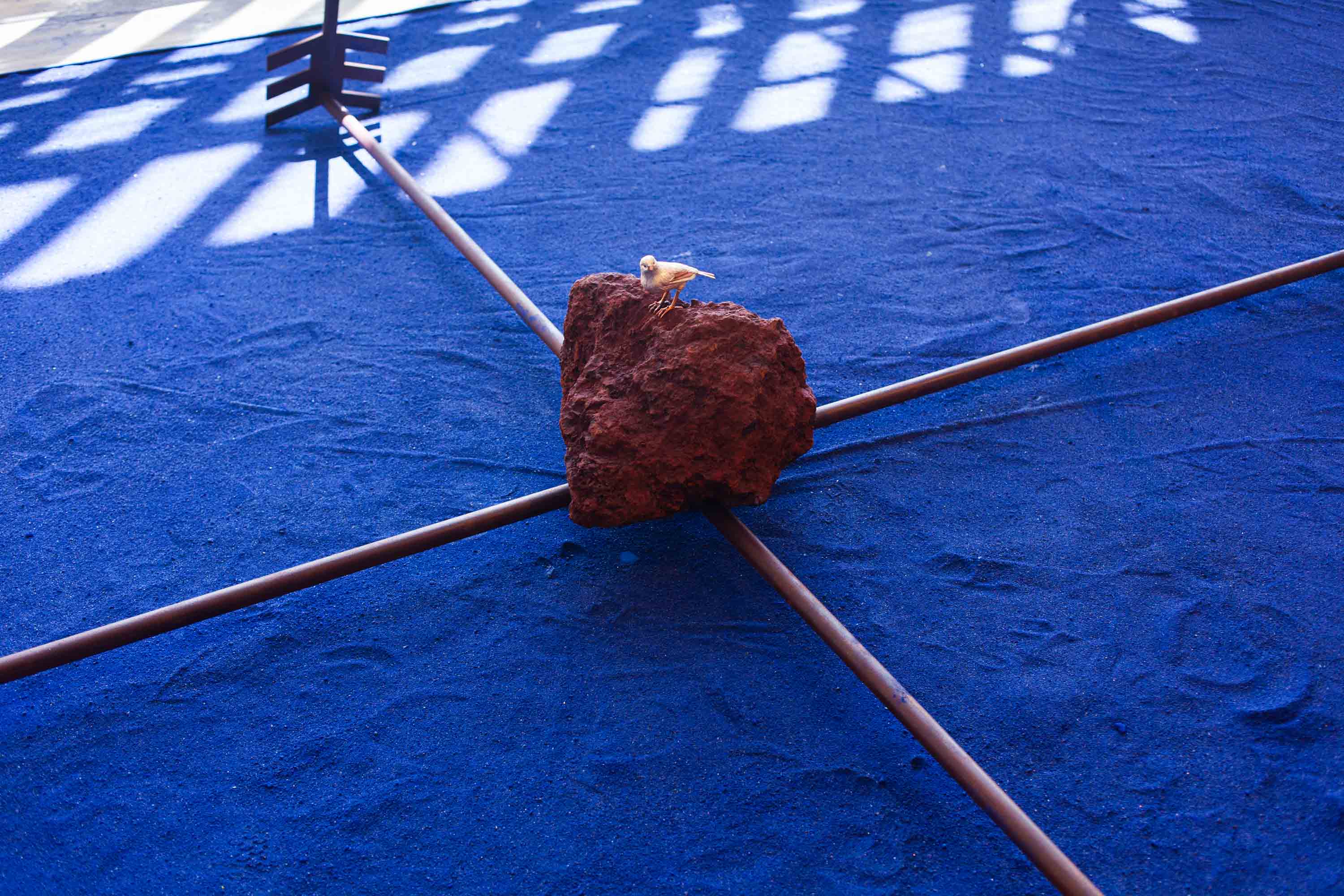

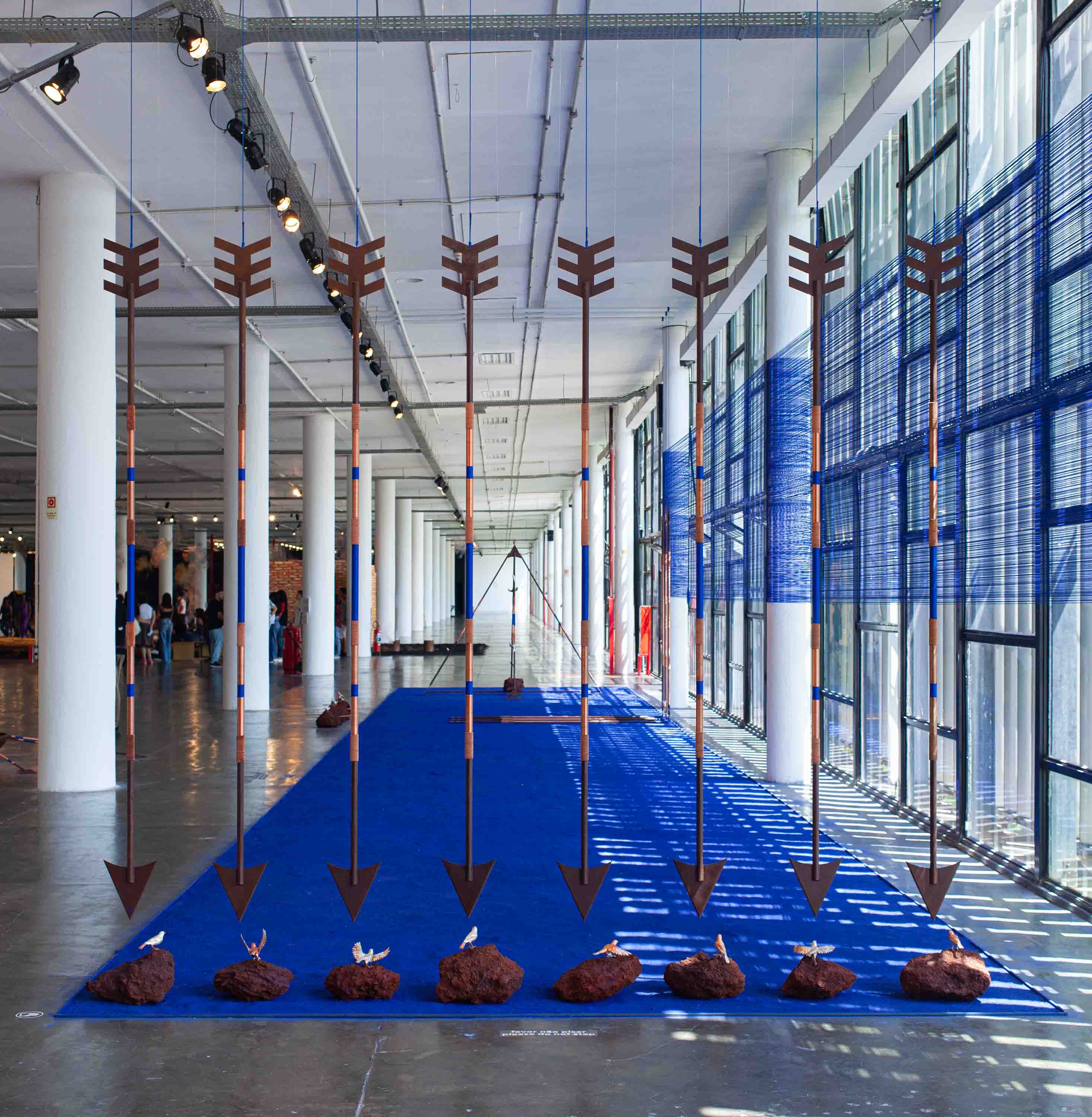
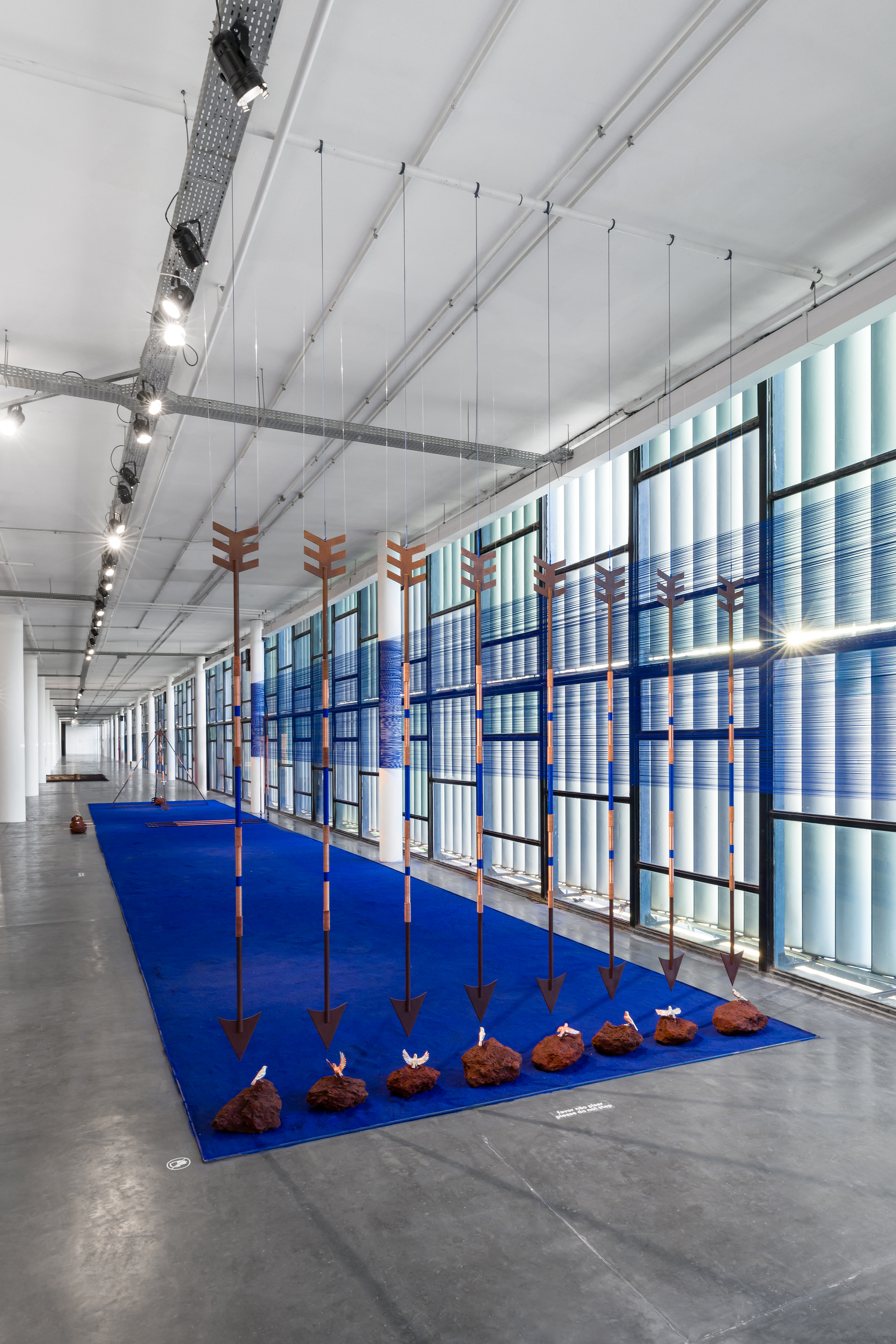
LUNG OF THE MINE
Iron, silver, copper, indigo, iron ore and rope
300 m²
2023
Lung of the mine
by Luana Livtra
Equation
✚ : path (possibility)
➔ : vector of events
Copper and silver: conduction of energy and information. Air. Iron: Black body
Gold: Death and eternity
“The intermediate space between the sky and the earth is filled by a breath.”
In Brazil, enslaved Africans would bring a canary into the gold mines. The canary, a bird known for its strong song, has lungs highly sensitive to toxic gases such as methane and carbon monoxide. When the bird stopped singing or showed signs of distress, the miners knew it was time to leave the mine to avoid poisoning. They also understood the need to open an air shaft, a vertical tunnel dug from the mine’s ceiling to the forest floor, allowing oxygen to flow in and toxic gases to escape.
Most of the time, the canary died, but its death served as a vital warning, preventing the deaths of countless African miners.
In Haiti, the sound that guided enslaved people in their escape was the call of the lambi — a marine conch shell, also known as the queen conch. In the darkness of the forest, breath blown into the shell produced a sound that guided Black bodies toward freedom.
Air carries the resistance of those who evade systems of violence. The wind itself is the path of those who escape.
In the mineral realm, silver is the most conductive of metals, followed by copper. In Chinese cosmology, metal is the element associated with the lungs.
By reflecting on the relationship between the strategies for escaping death within the mine and what was extracted from its depths, we can draw a connection between metal and air through their shared conductivity.
Breath and metal are both conductors of energy, liberation, and divergence.
Lung of the mine
By Thiago de Paula Souza, 2023
The transmission of oral histories is one of the key sources of Luana Vitra’s research. Born in Minas Gerais, she grew up listening to family stories that range from celebrations, Afro-diasporic knowledge and technologies, to the traumas of the region’s enslaved past in Ouro Preto, where her family lives. A recurring theme in these narratives is the legacy of centuries of extractivist economies that continue to cause the degradation of local ecosystems.
Among these stories, Vitra recalls hearing about enslaved people who used to take canaries with them to work in gold mines. These birds, with their incessant song and rapid metabolism, were used as sentinels. Their lungs would instantly react to the presence of toxic gases released by mineral extraction, and their sudden silence served as a warning for the miners to open escape routes through the tunnels, avoiding the dangers of lethal poisoning.
The survival of those people depended on the death of the birds, revealing how the slave system not only destroyed human lives but also extended its violence to other species.
This narrative is the starting point for Luana Vitra’s work at the 35th Bienal de São Paulo. The installation’s central element is a series of arrow-shaped patuás designed to “unblock” paths. Made of iron, a paradigmatic material that recurs throughout her practice, these arrows act as conductors, pointing toward places of prosperity where “possibility prevails.” At the center of the installation, some of the arrows are grouped and positioned diagonally in relation to each other. For Vitra, this arrangement creates a pathway that spatializes the meanings and potentialities each grouping holds. Complementing the composition are copper bowls, birds coated in silver and copper, metals known for their high conductivity, and indigo powder, a substance often used for spiritual cleansing.
Iron, silver, copper, indigo, iron ore and rope
300 m²
2023
Lung of the mine
by Luana Livtra
Equation
✚ : path (possibility)
➔ : vector of events
Copper and silver: conduction of energy and information. Air. Iron: Black body
Gold: Death and eternity
“The intermediate space between the sky and the earth is filled by a breath.”
In Brazil, enslaved Africans would bring a canary into the gold mines. The canary, a bird known for its strong song, has lungs highly sensitive to toxic gases such as methane and carbon monoxide. When the bird stopped singing or showed signs of distress, the miners knew it was time to leave the mine to avoid poisoning. They also understood the need to open an air shaft, a vertical tunnel dug from the mine’s ceiling to the forest floor, allowing oxygen to flow in and toxic gases to escape.
Most of the time, the canary died, but its death served as a vital warning, preventing the deaths of countless African miners.
In Haiti, the sound that guided enslaved people in their escape was the call of the lambi — a marine conch shell, also known as the queen conch. In the darkness of the forest, breath blown into the shell produced a sound that guided Black bodies toward freedom.
Air carries the resistance of those who evade systems of violence. The wind itself is the path of those who escape.
In the mineral realm, silver is the most conductive of metals, followed by copper. In Chinese cosmology, metal is the element associated with the lungs.
By reflecting on the relationship between the strategies for escaping death within the mine and what was extracted from its depths, we can draw a connection between metal and air through their shared conductivity.
Breath and metal are both conductors of energy, liberation, and divergence.
Lung of the mine
By Thiago de Paula Souza, 2023
The transmission of oral histories is one of the key sources of Luana Vitra’s research. Born in Minas Gerais, she grew up listening to family stories that range from celebrations, Afro-diasporic knowledge and technologies, to the traumas of the region’s enslaved past in Ouro Preto, where her family lives. A recurring theme in these narratives is the legacy of centuries of extractivist economies that continue to cause the degradation of local ecosystems.
Among these stories, Vitra recalls hearing about enslaved people who used to take canaries with them to work in gold mines. These birds, with their incessant song and rapid metabolism, were used as sentinels. Their lungs would instantly react to the presence of toxic gases released by mineral extraction, and their sudden silence served as a warning for the miners to open escape routes through the tunnels, avoiding the dangers of lethal poisoning.
The survival of those people depended on the death of the birds, revealing how the slave system not only destroyed human lives but also extended its violence to other species.
This narrative is the starting point for Luana Vitra’s work at the 35th Bienal de São Paulo. The installation’s central element is a series of arrow-shaped patuás designed to “unblock” paths. Made of iron, a paradigmatic material that recurs throughout her practice, these arrows act as conductors, pointing toward places of prosperity where “possibility prevails.” At the center of the installation, some of the arrows are grouped and positioned diagonally in relation to each other. For Vitra, this arrangement creates a pathway that spatializes the meanings and potentialities each grouping holds. Complementing the composition are copper bowls, birds coated in silver and copper, metals known for their high conductivity, and indigo powder, a substance often used for spiritual cleansing.